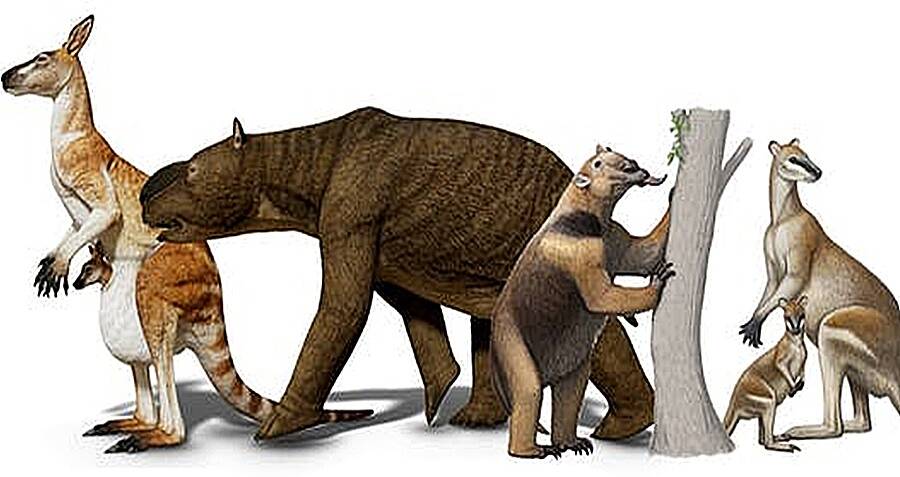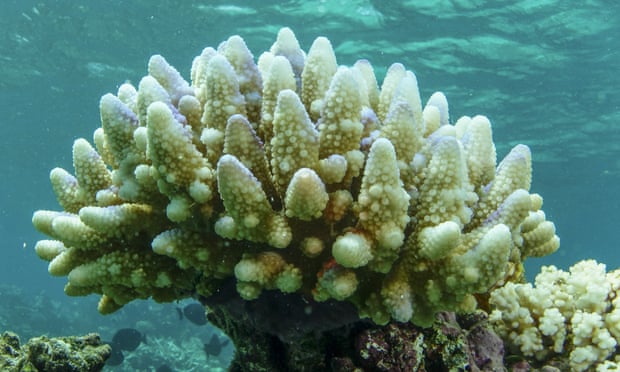UN Chief Warns Humanity Faces ‘Collective Suicide’ over Climate Crisis
(July 18, 2022) — Wildfires and heatwaves wreaking havoc across swathes of the globe show humanity is facing “collective suicide”, the UN secretary general has warned, as governments around the world scramble to protect people from the impacts of extreme heat.
António Guterres told ministers from 40 countries meeting to discuss the climate crisis on Monday: “Half of humanity is in the danger zone, from floods, droughts, extreme storms and wildfires. No nation is immune. Yet we continue to feed our fossil fuel addiction.”
The choice is stark: “collective suicide or collective cooperation.” Instead of a small number of superpowers competing for world domination, we must resolve to cooperate for our common survival. We need to stop destroying the planet for the short-term profit of a small number of the very wealthy. It’s time to abandon confrontation and competition in favor of conciliation and cooperation. The choice is simple: survival or suicide.
Shocking Report Warns
Climate Change Is Destroying Australia

List of threatened species grows as Australia’s ecosystems collapse
Adam Morton and Graham Readfearn / The Guardian
(July 19, 2022) — The health of Australia’s environment is poor and has deteriorated over the past five years due to pressures of climate change, habitat loss, invasive species, pollution and mining, according to a government report that warns the natural world holds the key to human wellbeing and survival.
The state of the environment report — a review completed by scientists last year but held back by the Morrison government until after the federal election — found abrupt changes in some Australian ecosystems over the past five years, with at least 19 now showing signs of collapse or near collapse.
While national and state governments had tried to address the decline, the report found there was not enough funding dedicated to the environment and there had been a lack of coordination across jurisdictions to properly address the cumulative impact of the threats.
The environment and water minister, Tanya Plibersek, who will release the five-yearly report on Tuesday at an address to the National Press Club, said it was a “shocking document” that told “a story of crisis and decline in Australia’s environment, and of a decade of government inaction and willful ignorance”.
“I won’t be putting my head in the sand,” she said. “Under Labor the environment is back on the priority list.”
The report quoted the World Economic Forum in finding that environmental degradation was now considered a threat to humanity that could “bring about societal collapses with long‑lasting and severe consequences”.

State of the Environment Report: Key Points
- Since 2016, 202 animal and plant species have been listed as threatened matters of national environmental significance, following 175 being added to the list between 2011 to 2016. This has happened while the rate of discovery and description of new species has slowed considerably over the past decade. There remain many more species that are unknown than those known.
- While a government threatened species strategy had improved the trajectories of 21 priority species, many others did not show improvements. The list would increase substantially in coming years as the impact of the catastrophic 2019–20 bushfires — which killed or displacedbetween 1 billion and 3 billion animals — became clearer.
- Australia has lost more mammal speciesthan any other continent, and has one of the highest rates of species decline in the developed world. More than 100 Australian species have been listed as either extinct or extinct in the wild. The major causes of extinction were introduced species and habitat destruction and clearing.
Water in the Murray Darling Basin hit record low levels in 2019.
- Almost half the country is now used for grazing and the areas committed to forestry and cropping having increased. More than 6.1m hectares of primary native forest (an area more than six times the size of suburban Melbourne) had been cleared since 1990. Over the five years to 2019 nearly 290,000 hectares of primary forest and 343,000 hectares of regrown forest was cleared.
- Australia has more foreign plant species than natives. Hundreds of billions of dollars have been spent over the past 50 years attempting to manage introduced species, diseases and invasive pests.
- Water levels in theMurray-Darling Basin were at record lows in 2019 due to extraction of water and drought. Rivers and catchments are mostly in poor condition, and native fish populations have declined by more than 90% in the past 150 years, a trend that appears to be continuing.

Coral bleaching is becoming more frequent due to global heating.
- Marine heatwaves have caused mass coral bleaching on the Great Barrier Reef in 2016, 2017 and 2020. (The report was finished beforethe latest mass bleaching in March this year.) Ocean acidification — caused by absorption of carbon dioxide from the atmosphere — is nearing a tipping point that will cause the decline of juvenile coral.
- Reefs around the country, and species that rely on them, were in poor and deteriorating condition. Sea urchins pushed south by rising sea temperatures havedevastated kelp beds along the country’s south-east, threatening rocky reef ecosystems and 150 reef species.
- Waterways, beaches and shorelines are in generally poor condition in areas near urban centres, but mostly in good condition in more remote areas. The broader marine environment is generally in better shape than the terrestrial environment, with 86% of populations classified as not overfished.
- Sea level rise has affected many low-lying areas, including the Kakadu wetlands. Saltmarshes across much of Australia’s coast are losing territory to mangroves.

In February, the koala was listed as endangered in New South Wales.
- Changes in land use mean Australia has the third largest cumulative loss of soil organic carbon in the world behind China and the US, a change that has implications for the climate crisis.
- Destruction of Indigenous heritage continues at an unacceptable rate against the wishes of Traditional Owners. Indigenous protected areas make up nearly half the national reserve system, but Indigenous people have poor access to finance and other critical support needed to manage their country.
- Most major Australian cities are growing at a faster rate than other developed cities across the planet. The pace of growth has increased urban heat, congestion, pollution and waste and put rising pressure on water and energy resources.
- At least 19 Australian ecosystems are showing signs of collapse or near collapse. Ecosystems experiencing collapse span the continent and include Antarctic and subantarctic ecosystems. Abrupt changes include the loss of Tasmania’s giant kelp forests.
- About 93% of the terrestrial habitat used by threatened species that was cleared between 2000 and 2017 was not being referred to the federal government for assessment under the Environment Protection and Biodiversity Conservation (EPBC) Act.
The lead authors of the report were Dr Ian Cresswell, an environmental scientist at CSIRO, Dr Terri Janke, a leading Indigenous lawyer, and Prof Emma Johnston, a deputy vice-chancellor for research at the University of Sydney.
They stressed the natural world, as the source of food, water, air and raw materials, was not separate from the human world.
“In a rapidly changing climate, with declining biodiversity, the general outlook for our environment is deteriorating. The impacts of this will affect us all. It is in our own interest to understand, protect and restore the health of our environment,” they said.
“It is also our responsibility. Our environment has intrinsic value beyond direct human use.”
The report found improving the state of the environment would require national leadership, integrated management across federal, state and territory systems, new forms of funding and improved monitoring and reporting.
Plibersek told the ABC on Tuesday that the country’s environment laws were not working, authorities did not have adequate data on the scale of the problem and change was needed. “If we stick with what we’re doing now we’ll keep getting the same results,” she said.
The minister said she expected to introduce changes to environment laws, including the creation of the Environment Protection Agency, to parliament next year after consulting “very widely”, building on the work of a statutory review by the former competition watchdog chief Graeme Samuel.
The Greens’ environment spokesperson, Sarah Hanson-Young, said the report showed “this is an emergency and in an emergency you take emergency action”.
She said it described a “litany of environmental wreckage fuelled by climate change and years of denial and neglect”, and environment laws needed to be changed, including to consider the climate impacts of proposed fossil fuel developments.

Australia’s 2019–20 bushfires killed or displaced as many as 3 billion animals.
“If the minister is really alarmed by this report, then she will take immediate action to ensure no more critical habitat is cleared and polluting projects that are fuelling the climate crisis are stopped,” Hanson-Young said.
The president of the Australian Academy of Science, Prof Chennupati Jagadish, said the report was sobering reading and the outlook for the environment was grim, with critical thresholds in many natural systems likely to be exceeded as global heating continued.
Jagadish said the report showed there had been “significant underinvestment” in the scientific knowledge and capacity needed to understand the state of the environment, and called for the creation of an independent agency to manage wildlife and biodiversity data. He said Australia should also revisit its emission reduction commitments to more rapidly respond to the climate crisis.
Prof Euan Ritchie, from the Centre for Integrative Ecology at Deakin University, said the report was authoritative, long overdue and confirmed “Australia’s utter failure of environmental and conservation stewardship”.
Posted in accordance with Title 17, Section 107, US Code, for noncommercial, educational purposes.
